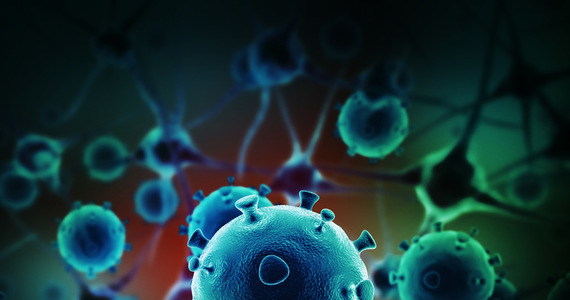This was shown by researchers led by Cheng Kai Lim, a synthetic biologist at the National University of Singapore DNA can not only be used to capture and store images. These images can be later recovered using sequencing techniques.
By passing a special two-dimensional light through DNA samples, scientists have been able to create what they call “The biological equivalent of a digital camera”. They called it BacCam.
In studying that published In Nature Communications, we read:
The integration of biological and digital interfaces has led to increased interest in the use of biological materials for digital data storage, where promising data are stored in specific DNA sequences generated by DNA synthesis. However, methods that can eliminate the need for DNA synthesis, which are usually costly and inefficient, are not available.
The researchers tackled a method for capturing two-dimensional patterns of light in DNA, using photonic circuits to record light exposure in the DNA, encoding spatial locations using barcodes and restoring stored images using high-throughput sequencing. “This work results in a ‘living digital camera’, paving the way for the integration of biological systems with digital devices,” says Cheng Kai Lim.
Images stored in DNA
It’s about how digital data like photos, videos, and documents are stored in our DNA, which is very promising, however Too expensive and ineffective.
Scientists have found a way to capture an “image” with light and store that “image” in DNA. They used something called Photogenetic circuits, which are like tiny light sensors made of proteins in cells that respond to light And DNA changes in response to this light.
It’s a bit like taking a picture with a regular camera, but instead of saving the picture to a memory card, they store it in their DNA. Moreover, to read this “image” they use a technology called “Next Generation Sequencing”, which is simply an advanced technology for reading DNA.
Tests conducted by scientists and creators of BacCam
|
Nature Communications
The researchers showed that they can take many different pictures, and store up to 1,152 bits of data (which isn’t a lot compared to what a regular camera can take). They also showed it “Photos” are drought, heat and UV resistant, which means they can survive conditions that would ruin a traditional photo.
Interestingly, you can also take “pictures” of different colors of light (red and blue) at the same time, which means that it is possible to record different information simultaneously.
They recorded the smile and the name of the camera
Scientists have realized Simple 96-bit images – including a smiley face and the word “BacCam” – At specific points in the bacterial culture DNA using blue light.
The images were successfully stored in DNA and could be retrieved with near-perfect accuracy by sequencing the encoded strands. What’s more, the team was able to use red light to project a discrete image onto the same DNA fragments, signifying this Multiple images can be captured, stored and decoded from a single genetic sample.
The study indicates that the number of different images that can be stored in a DNA pool and retrieved in a single pass ranges from 100 to 1000. The team concluded.
DNA engines are the future of the market
Contrary to appearances Storing data in DNA isn’t an entirely new discovery. Work on the proper “disks” has been going on for years. For example, in 2012, scientists from Harvard University They encoded the DNA molecules using the digital data. They put eleven JPEG images, a 53,000-page HTML book into their DNA. 400 words and a simple JavaScript program.
The idea is that instead of storing data on traditional media such as hard drives or flash drives, the information is stored as sequences of nucleotides (the building blocks of DNA).
DNA is a very dense medium for storing data. Theoretically, one gram of DNA can store up to 215 petabytes (215 million gigabytes!) of data. In comparison, a 1 TB (1000 GB) hard drive weighs approximately 450 grams.
Data coding in DNA consists of translating binary “zeros” and “ones” into four DNA nucleotides:
- adenine (a)
- cytosine (c)
- Guanine (G)
- thymine (T)
These DNA sequences are then synthesized and can be stored for a very long time.
To read the data, the DNA is sequenced (read), a The nucleotide sequences are translated back into binary computer code.
Despite its huge potential, this technology is still in its infancy and faces many challenges. DNA synthesis is expensive and time-consuming, as well as complex—especially on a large scale. Reading and writing data takes a lot of time, a Encrypting about 80KB costs about $1,200.
In addition, reading data from DNA is not easy and requires advanced techniques. Despite this, progress in this area is very promising, and data storage in DNA has the potential to revolutionize the way we store information. with a report The “Global DNA Digital Data Storage Market Forecast to 2035” shows that the DNA digital data storage market will grow very dynamically in the years 2022-2035, at a compound annual growth rate (CAGR) of approximately 64.4 percent. By the end of 2035

Echo Richards embodies a personality that is a delightful contradiction: a humble musicaholic who never brags about her expansive knowledge of both classic and contemporary tunes. Infuriatingly modest, one would never know from a mere conversation how deeply entrenched she is in the world of music. This passion seamlessly translates into her problem-solving skills, with Echo often drawing inspiration from melodies and rhythms. A voracious reader, she dives deep into literature, using stories to influence her own hardcore writing. Her spirited advocacy for alcohol isn’t about mere indulgence, but about celebrating life’s poignant moments.








